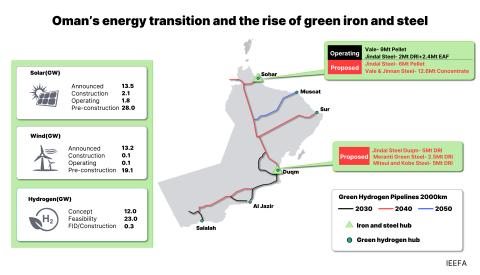The financial case for fossil fuel divestment
Download Full Report
Key Findings
The financial risks of continued investment in the coal, oil and gas sectors are growing.
Higher prices are not going to solve the sector’s woes. Recently, oil prices have begun rising from their low of $28 per barrel in 2016 to where they are now, above $75 per barrel. But even with this two-year run-up in prices, energy stocks were the second-to-last performing sector in 2017.
The trend toward lower energy costs and more energy and technological innovation tilts away from fossil fuel investment, which is largely inflationary, volatile, and disruptive to national economic growth strategies.
Executive Summary
A diverse group of stakeholders — mainstream and “sustainable” investors, shareholder activists, environmental groups, students, and politicians — are grappling with the question of why institutional funds remain invested in fossil fuels and how divestment can be achieved in a manner consistent with investment objectives and fiduciary needs.
This discussion is driven principally by a worldwide concern with how fossil fuel use is accelerating the destruction of the climate.
The fossil fuel sector is shrinking financially, and the rationale for investing in it is untenable
Often overlooked in the divestment debate is the financial case for divestment. This paper makes the case for divestment as a proper financial response by investment trustees to current market conditions and to the outlook facing the coal, oil and gas sectors. It is driven principally by the likelihood that future returns from the fossil fuel sector will not replicate past performance.
The financial case for fossil fuel divestment is strong. Over the past three and five years, respectively, global stock indexes without fossil fuel holdings have outperformed otherwise identical indexes that include fossil fuel companies. Fossil fuel companies once led the economy and world stock markets. They now lag.
Paradoxically, the sector’s sudden fall from grace was largely caused by a price drop that grew out of a major technological innovation in the oil and gas sector: hydraulic fracturing (fracking). After oil prices crashed in 2014, oil company revenues plummeted, expensive capital investments failed, massive amounts of reserves were written off as no longer economic, and major bankruptcies occurred.
This decline exposed long-standing weaknesses in the industry’s investment thesis, which was to assume that a company’s value was determined by the number of barrels of oil (reserves) it owned.
In the new investment environment, cash is king, which creates a conundrum for the industry. Aggressive acquisition and drilling will likely lead to more losses for investors. If oil and gas companies pull back, on the other hand, and acknowledge the likelihood of lower future returns and more modest growth patterns, their actions will only confirm the industry is shrinking financially.
In the new investment thesis, fossil fuel stocks are now increasingly speculative. Current financial stresses — volatile revenues, limited growth opportunities, and a negative outlook —- will not merely linger, they will likely intensify. Structural headwinds will place increasing pressure on the industry causing fossil fuel investments to become far riskier.
A Cumulative Set of Risks Undermines the Viability of the Fossil Fuel Sector
Climate change is hardly the only challenge facing the fossil fuel industry. The broader factors bedevilling balance sheets stem from political conflicts between producer nations, competition, innovation, and attendant cultural change. These risks can be grouped into a few broad categories, such as “pure” financial risk; technology and innovation risk; government regulation/oversight/policy risk, and litigation risk (described in Appendix III).
The absence of a coherent, industry-wide value thesis that embraces the changes taking place in the global economy places fossil fuel investors at a distinct disadvantage. Successful oil and gas investing now requires expertise, judgment, an appetite for risk, and a strong understanding of how individual companies are positioned with respect to their competitors both inside and outside the industry.
Passive investors could once choose from a basket of oil and gas industry securities and have little reason to fear they would lose money. Today, that is no longer the case, a reality that is pushing passive investors into other blue-chip stocks with stable returns. In short, potential returns on coal, oil, and gas equities are no longer worth the risk.
The risk posed by fossil fuel investments requires fiduciary action, and how each fund resolves the issue must be based on its own history, mission, operating environment, investment goals, and approach to risk.
The decline of the fossil fuel sector requires a response from trustees of investment funds big and small. While a decision on divestment will be driven by the particular goals and standards of each fund, it is clear that every fund must now consider fossil fuel divestment.
Objections to the Divestment Thesis Rely Upon a Series of Assumptions Unrelated to Actual Fossil Fuel Investment Performance
Detractors raise a number of objections to divestment, mostly on financial grounds, arguing that it will cause institutional funds to lose money or undermine their ability to meet their investment objectives, thus ultimately harming their social mandates. Such claims form a dangerous basis for forward-looking investment and are a breach of fiduciary standards. Objections to divestment are rebutted in detail in this paper. An FAQ section, included in Appendix I, provides an introduction to specific divestment issues.
Higher prices, as some investors argue, are not going to solve the sector’s woes, as described in Appendix II, which outlines risks facing the sector in both high- and low-price environments.
Appendix III discusses risks related to fossil fuel sector litigation.
Press release: BlackRock’s fossil fuel investments wipe US$90 billion in massive investor value destruction
Please view full report PDF for references and sources.
















